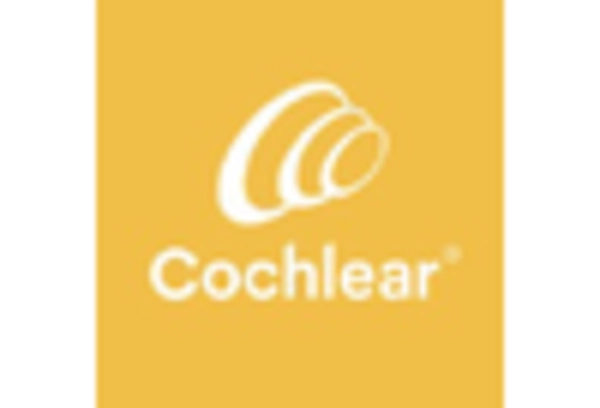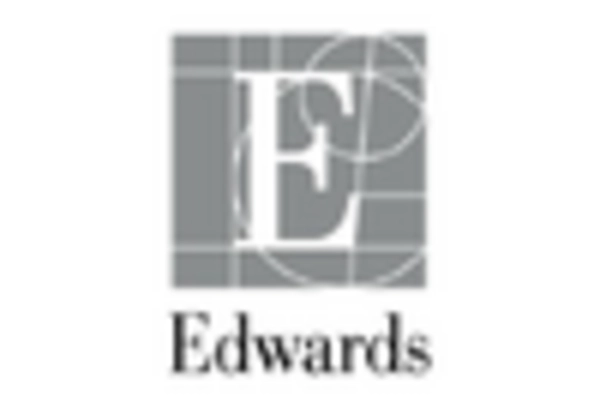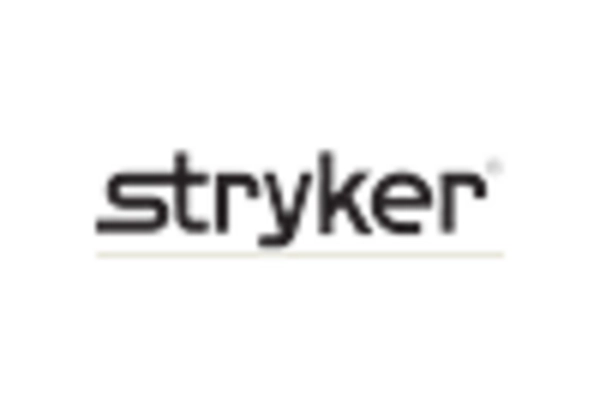Advancements in Biomaterials
Innovations in biomaterials are significantly influencing the medical bionic-implant-artificial-organs market. The development of biocompatible materials that can mimic the properties of natural tissues enhances the functionality and longevity of implants. For example, the introduction of smart polymers and hydrogels has improved the integration of artificial organs with the human body, reducing rejection rates. The market for biomaterials is expected to grow at a CAGR of 12% from 2025 to 2030, reflecting the increasing focus on developing materials that can support complex organ functions. This advancement not only boosts the efficacy of bionic implants but also encourages investment in research and development, further propelling the market.
Rising Prevalence of Chronic Diseases
The increasing incidence of chronic diseases such as diabetes, heart disease, and renal failure is a primary driver for the medical bionic-implant-artificial-organs market. As these conditions become more prevalent, the demand for innovative solutions to replace or support failing organs intensifies. For instance, the American Diabetes Association reported that approximately 34.2 million Americans have diabetes, which often leads to complications requiring bionic implants. This trend suggests a growing market potential, as patients seek advanced medical interventions to enhance their quality of life. Furthermore, the healthcare expenditure in the US is projected to reach $6 trillion by 2027, indicating a robust investment in medical technologies, including bionic and artificial organs.
Increased Investment in Healthcare Technology
The surge in investment in healthcare technology is a crucial driver for the medical bionic-implant-artificial-organs market. Venture capital funding for health tech startups has seen a remarkable increase, with investments reaching over $20 billion in 2025 alone. This influx of capital is likely to accelerate the development of innovative bionic and artificial organ solutions. Additionally, government initiatives aimed at fostering technological advancements in healthcare, such as grants and subsidies, further stimulate market growth. As stakeholders recognize the potential of bionic implants to address unmet medical needs, the financial backing for research and commercialization is expected to expand, enhancing the market landscape.
Aging Population and Demand for Organ Replacement
The aging population in the US is a significant driver of the medical bionic-implant-artificial-organs market. As the demographic shifts towards an older age group, the incidence of organ failure and related health issues rises. According to the US Census Bureau, by 2030, all baby boomers will be over 65, leading to an increased demand for organ replacement solutions. This demographic trend suggests a growing market for bionic implants, as older adults often require advanced medical interventions to maintain their health and independence. Consequently, healthcare providers are likely to invest more in bionic technologies to cater to this expanding patient population.
Regulatory Support for Innovative Medical Devices
Regulatory support for innovative medical devices is emerging as a vital driver for the medical bionic-implant-artificial-organs market. The US Food and Drug Administration (FDA) has implemented streamlined processes for the approval of breakthrough devices, which encourages manufacturers to develop and market new bionic solutions. This regulatory environment fosters innovation by reducing time-to-market for advanced medical technologies. In 2025, the FDA approved a record number of medical devices, reflecting its commitment to supporting innovation in healthcare. As regulatory pathways become more favorable, companies are likely to invest in the development of bionic implants, thereby enhancing market growth.

















Leave a Comment